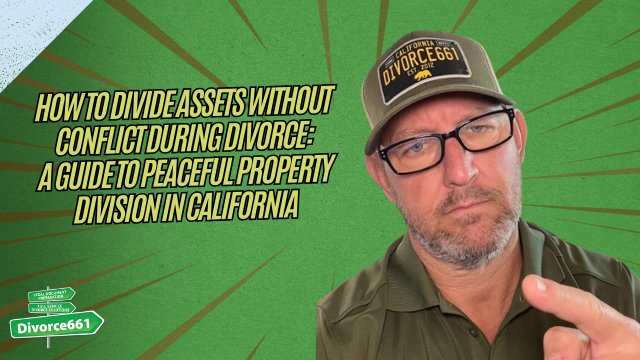How to Handle a Same-Sex Divorce in California
I’m Tim Blankenship from Divorce661. If you’re considering a same-sex divorce in California, here’s a clear, reassuring guide based on what I share with clients every day. California treats same-sex divorces the same as any other divorce—but there are practical issues that often come up, and understanding the steps and options can make the process smoother, fairer, and less stressful.
Overview: Same-Sex Divorce Is the Same Process
California law applies the same divorce procedures to same-sex couples as it does to opposite-sex couples. That means the basic legal framework—filing the petition, serving your spouse, and exchanging financial disclosures—doesn’t change because of sexual orientation. What does matter are the real-life complexities of your relationship: shared assets, support obligations, and custody arrangements when children are involved.
The Step-by-Step Process
While every case is unique, these are the core steps you can expect in a California divorce:
- File: One spouse files the divorce petition with the court.
- Serve: The filing spouse serves the papers to the other spouse according to legal requirements.
- Financial Disclosures: Both parties exchange detailed financial information—income, assets, debts, and expenses. These disclosures are essential for fair resolutions on property, support, and other issues.
- Negotiate or Litigate: Many couples negotiate settlements through mediation or attorneys; otherwise, the court will decide unresolved issues.
- Finalize: Once agreements are reached (or the court issues orders), the divorce judgment is entered and the process is complete.
Key Issues: Property, Support, and Custody
These are the most common areas that require careful attention in any divorce—same-sex or otherwise:
- Property Division: California is a community property state, so assets and debts acquired during the marriage are typically divided fairly. Identifying what is community vs. separate property can require documentation and negotiation.
- Spousal Support: Support can be an issue depending on income disparities, earning capacity, and length of the marriage.
- Child Custody and Support: If children are involved, decisions focus on the children’s best interests—custody, visitation, and child support are handled according to the same standards used in all family law matters.
Long-Term Relationships Before Legal Marriage: A Common Complication
One tricky area I often see is when couples were together for many years before legally marrying. How do you account for assets and contributions accumulated before the official marriage date?
Here’s what matters:
- Accurately documenting the full history of the relationship—financial contributions, joint purchases, and shared decisions—helps determine fair division.
- Court considerations typically center on when assets became community property and how separate-property claims are supported by evidence.
- Open, respectful discussions and thorough documentation often lead to more equitable and efficient settlements than contentious litigation.
Client Example: Together 20+ Years, Married 8
I worked with a couple who had been partners for over 20 years but were legally married for only eight. They had accumulated property, businesses, and retirement benefits over the entire course of their relationship. By carefully documenting their full history—how assets were acquired, who contributed what, and how they managed finances—we were able to explain the complete timeline and reach a fair settlement that honored the full relationship, not just the eight years of marriage.
The key to their success was an amicable, respectful approach. Instead of fighting over narrow legal labels, they focused on fairness and cooperation, which saved time, money, and emotional energy.
How We Approach Same-Sex Divorce at Divorce661
At Divorce661 we aim to make divorce:
- Amicable: Encouraging respectful communication and settlement where possible.
- Affordable: Offering flat-fee services that reduce uncertainty about legal costs.
- Caring: Guiding clients through each step with clarity and compassion.
We help clients prepare court-ready agreements, exchange financial disclosures properly, and present a complete relationship history when it matters. Mediation and settlement tools are emphasized to keep matters out of contentious court battles whenever possible.
Practical Tips If You’re Facing a Same-Sex Divorce in California
- Start organizing financial documents now: bank statements, tax returns, property deeds, and retirement account records.
- Document the timeline of your relationship and major financial contributions—especially if you were together long before marriage.
- Exchange disclosures promptly and honestly—transparency speeds resolution.
- Consider mediation or a flat-fee settlement service to limit costs and keep control of outcomes.
- Prioritize the well-being of children by focusing on stability, parenting plans, and clear communication.
- Seek experienced help early—an informed approach reduces surprises and preserves dignity for both parties.
Conclusion and Next Steps
Same-sex divorce in California follows the same legal procedures as any other divorce, but every relationship brings its own details. Long-term partnerships that predate legal marriage can add complexity—so document your history and approach negotiations with fairness in mind. An amicable, organized process is usually faster, less expensive, and less emotionally draining.
If you want guidance tailored to your situation, visit Divorce661.com for a free consultation. We provide flat-fee, full-service divorce solutions across California and specialize in helping same-sex couples reach respectful, court-ready agreements.
“By focusing on mutual understanding and cooperation, you can navigate divorce with dignity and move into the next chapter of your life.”



